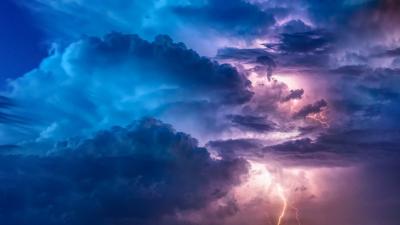Building a Storm Tracker Archive
As the largest form of deep convective storms, mesoscale convective systems (MCSs) play an important role in the hydrologic cycle and often produce hazardous weather events such as hail, tornadoes, lightning, and flooding east of the Rocky Mountains. Because MCSs vary greatly across regions and throughout all seasons, quantifying their characteristics and associated atmospheric large-scale environments has been a challenge. To systematically characterize the variability of MCSs and their large-scale environments, researchers at the U.S. Department of Energy’s Pacific Northwest National Laboratory developed a 13-year high-resolution database of MCSs over the United States. This work provides a more complete view of MCSs east of the Rockies and highlights the less well-known year-round occurrence of MCSs in the Southeast.
In a warming world over recent decades, MCSs have become more frequent and produced more intense precipitation. Developing an MCS database is key to improving researchers’ understanding of the seasonal, diurnal, and regional variability of MCSs, their three-dimensional structures, and their relationship and interactions with their atmospheric large-scale environments. Global earth system models often fail to simulate MCSs and their associated intense precipitation, resulting in large uncertainties in projecting future changes in precipitation. The more detailed description of MCS characteristics developed in this work provides a target for next-generation earth system simulations and the basis for understanding MCSs in an evolving environment.
Researchers developed a high-resolution MCS database by synthesizing satellite and radar network observations available from 2004 to 2016. They used the data to characterize the spatiotemporal variability and three-dimensional structures of MCSs east of the Rocky Mountains and associated atmospheric large-scale environments across all seasons. The data also provides a view into the seasonal differences in the large-scale environments and MCS genesis, stratiform versus convective features, and precipitation characteristics. MCSs that produce more intense convection lasting at least 6 hours account for over 50% of warm-season precipitation in the Great Plains and over 40% of cold-season precipitation in the Southeast. The Great Plains has the strongest MCS seasonal cycle, peaking in May to June, while in the Southeast, MCSs occur year-round.
Distinctly different large-scale environments across the seasons have significant effects on the structure of MCSs:
- Spring and fall MCSs commonly initiate under strong large-scale weather systems like cold fronts and favorable thermodynamic environments in the Great Plains around sunset. Spring MCSs feature both large and deep convection, with a large stratiform rain area and high-volume rainfall.
- Summer MCSs often initiate under weak baroclinic forcing, featuring a high-pressure ridge with weak low-level convergence acting on the warm, humid air associated with the low-level jet. MCS genesis concentrates east of the Rocky Mountain Front Range and near the southeastern coast in the afternoon. Summer MCSs have the largest and deepest convective features, the smallest stratiform rain area, and the lowest rainfall volume.
- Winter MCSs are commonly associated with the strongest baroclinic forcing and the largest MCS precipitation area and weakest convective features over the Southeast.
The MCS database has been submitted to the Atmospheric Radiation Measurement (ARM) user facility archive. Characterizing the regional and seasonal differences of MCSs in the United States is indispensable for evaluating next-generation, high-resolution earth system simulations and guiding future model development.

